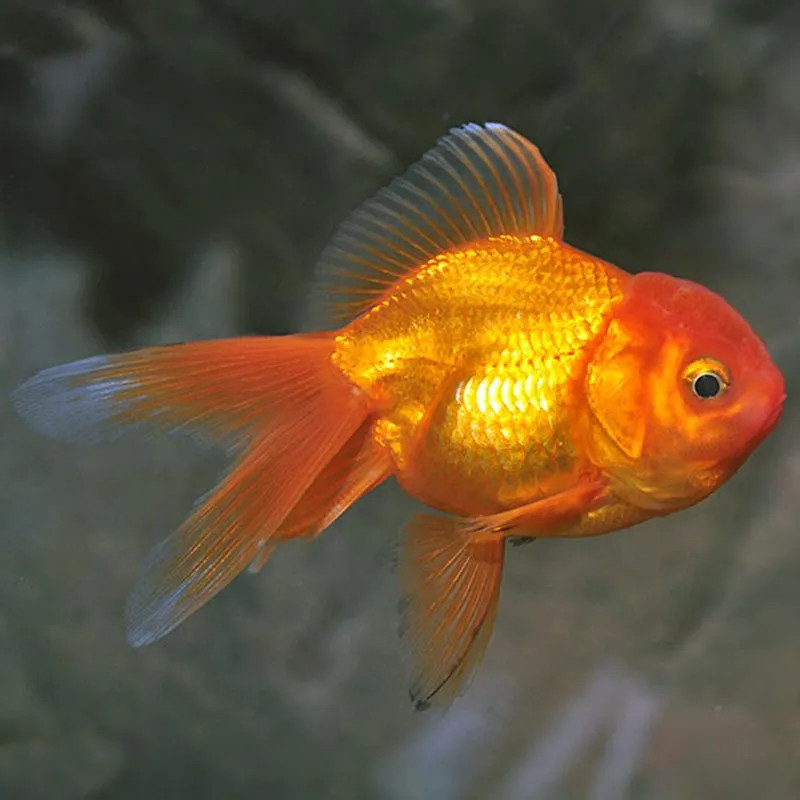Stocks Available
Assorted Ryukin Goldfish
SKU:129033
CARASSIUS AURATUS
2.25 - 2.5 INCH

Stock Available
Introduction: • Species: Goldfish • Common Names: Red Oranda Goldfish • Natural Habitat: Domesticated ornamental breed, originating from selective breeding in China and Japan, commonly found in aquariums and garden ponds globally. Physical Characteristics: • Appearance: The Red Oranda is renowned for its bright red body with a distinctive head growth (wen) that covers the top of its head. It has a rounded body and elegant, flowing fins. • Size: Can grow up to 8-12 inches (20-30 cm) in ideal conditions. • Lifespan: With proper care, Red Orandas can live for 10-15 years or longer in healthy environments. Habitat Requirements: • Tank Size: Requires at least a 30-gallon tank for a single fish, with additional space for more individuals. • Water Conditions: o Temperature: 65-72°F (18-22°C). o pH: 6.0-8.0. o Water Hardness: Prefer soft to moderately hard water. • Aquascaping: Provide smooth surfaces to prevent injuries to the wen and fins, with plenty of open space for swimming. Some live plants can be added, but avoid sharp décor. Diet: • Primary Diet: Omnivorous; in their natural environment, goldfish consume plant material, algae, and small insects. • Supplemental Feeding: High-quality goldfish pellets or flakes, with occasional fresh vegetables such as peas and live or frozen protein sources like brine shrimp. • Feeding Frequency: Feed 2-3 times a day, in small amounts to prevent overfeeding and maintain water quality. Compatibility: • Temperament: Peaceful, slow-moving fish, making them compatible with other fancy goldfish varieties. • Suitable Tank Mates: Best kept with other slow, non-aggressive species like Fantails, Ryukins, or other Orandas. • Incompatibilities: Avoid fast or aggressive fish that may harass or outcompete them for food. Care Level: • Difficulty: Moderate; requires stable water parameters and careful monitoring of the wen for potential health issues. • Health Monitoring: Watch for common goldfish diseases such as swim bladder issues, ich, and fin rot, as well as infections in the head growth. Breeding: • Breeding in Captivity: Can be bred in home aquariums or ponds. • Spawning: Egg layers; females will scatter eggs which should be separated from the adults to prevent consumption. Economic Considerations: • Market Demand: High due to their attractive appearance and selective breeding. • Wholesale Pricing: Higher than other goldfish varieties because of their specific traits and ornamental value. • Retail Pricing: Priced moderately to high depending on size, color quality, and wen development. Sustainability and Conservation: • Wild Population: Not relevant as Red Orandas are domesticated. • Aquaculture Efforts: Widely bred in captivity for ornamental use. • Regulations: No special regulations, but care should be taken to prevent their release into natural ecosystems. Conclusion: The Red Oranda Goldfish is a visually striking, peaceful addition to any aquarium, appreciated for its vibrant color and unique head growth. With proper care and a well-maintained tank, these beautiful fish can live long and thrive, bringing elegance to any aquascape.
Data sheet
16 other products in the same category: